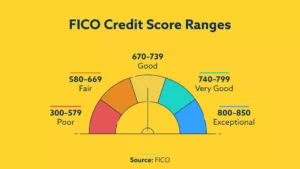
According to a new Urban Institute study nearly 1 in 3 consumers with a credit history have some type of debt in collections. The debt in collections ranged from as little as $25 up to a scary $125,000. But the average amount owed was $5,200.
The study examined nonmortgage related bills that ended up with debt collectors varied significantly. Debt owed from credit cards, auto loans, unpaid rent, medical bills, student loans, bounced checks, child support payments to gym memberships, library fines and even parking debts were included in the study.
Past due debt was also examined and it was found that 1 in 20 consumers with a credit file have a report of past due debt, indicating they are between 30 and 180 days late on a nonmortgage payment.
Regionally, the study showed the consumers in the South had both debt in collections and past due debt — as high as 44% in some parts; while the Northeast had the lowest at less than 30%.
But geographically, no area of the country is untouched.
Among the states, Nevada had the highest percentage of residents with debt in collections — 47% – as well as the highest average amount owed at $7,198.
By contrast, North Dakota had the lowest percentage of residents with debt in collections at just 19%, while the District of Columbia had the lowest average dollar amount owed per person at $3,547.
The Urban Institute said that stagnant incomes are key to why some parts of the country are struggling to repay their debt.
Interestingly it was found that some consumers only became aware they had a debt in collections when reviewing their credit reports.
One reason consumers were unaware of a collection account is that contact information had changed since the bill went unpaid. Final utility bills, cell phone bills and even medical bills can slip through the cracks and show up on credit reports as collection accounts.
At least with credit cards, debt won't go into collections unless it's more than 180 days past due. However, time frames can differ from state to state when it comes to debt like parking tickets, utility and cell phone bills and medical bills.
But once debt is categorized as “in collections,” it can follow one of three courses, according to the Urban Institute report. The creditor can charge it off and sell it to a debt buyer, put the account into default, or seek to collect what's owed through an in-house department or a third-party debt collector.
In any of those cases, however, the cost to the consumer is high and long-lasting.
“[It] can harm credit scores, which can tip employers' hiring decisions, restrict access to mortgages, and even increase insurance costs,” said Caroline Ratcliffe, a senior fellow at the Urban Institute.
Find out what to do if you discover a collection account on your credit reports.
















